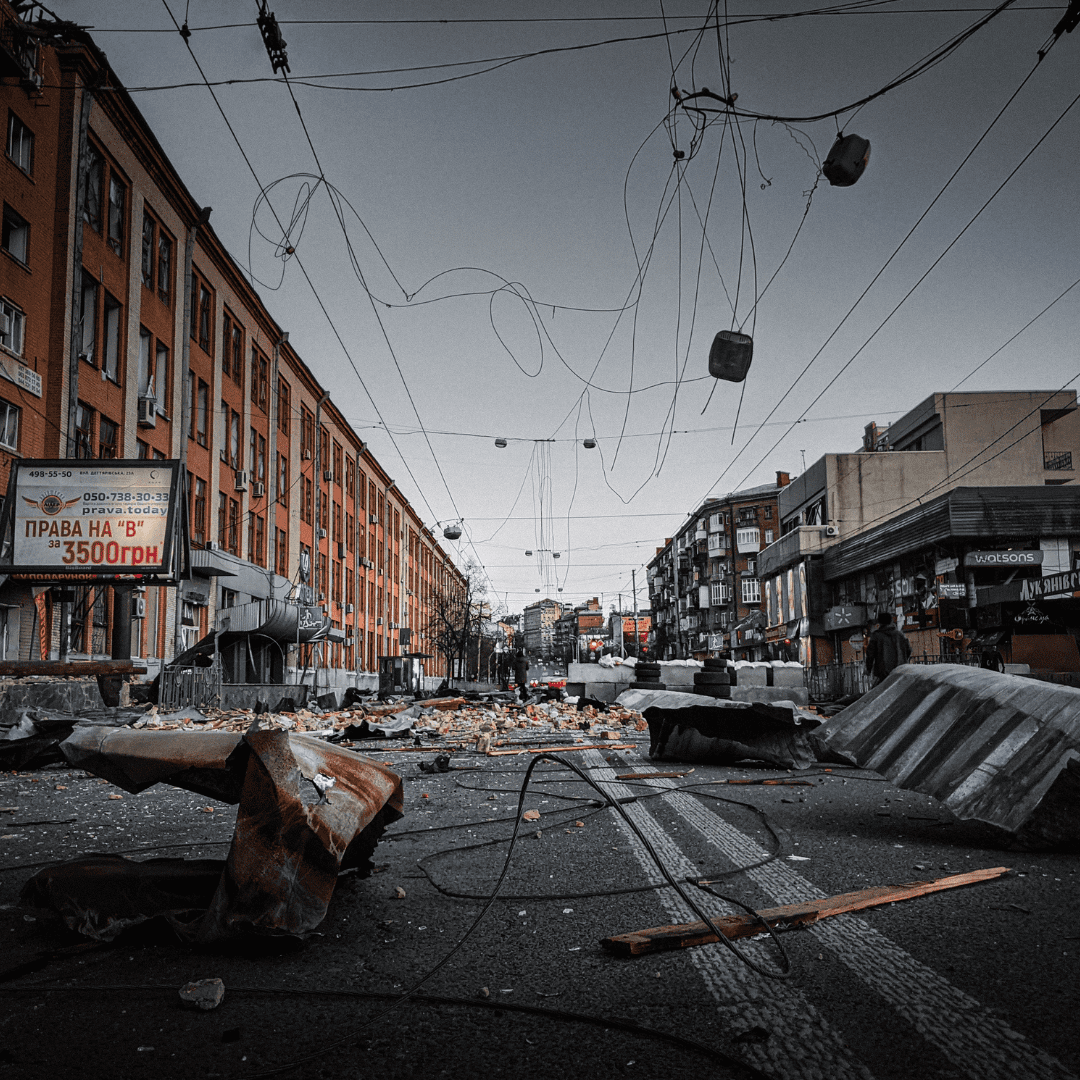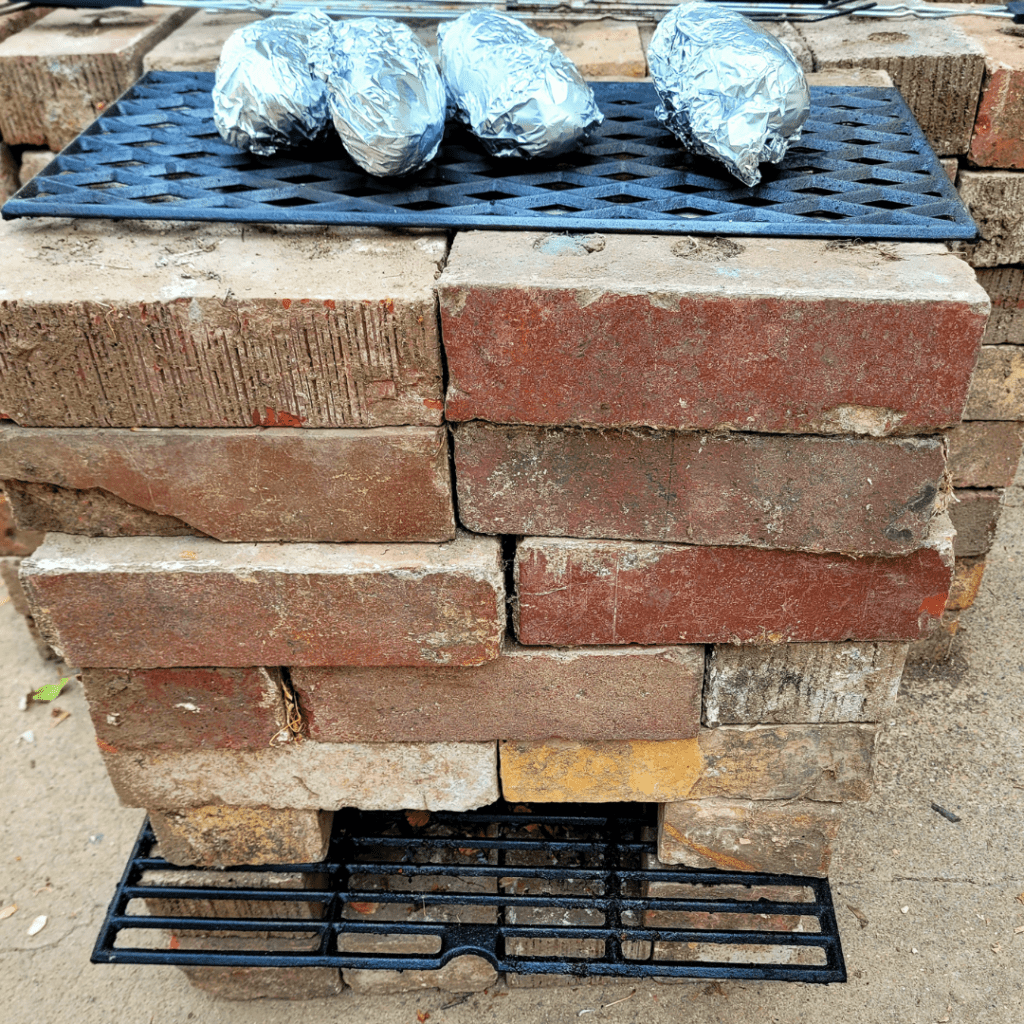When war breaks out, it’s not just about front lines and soldiers. It’s about everyday people — mothers, children, neighbors — trapped in broken cities with no working systems. No electricity. Without running water. No stores or support. In this post, we’ll look at how people are surviving in broken cities with broken systems, and what their courage and creativity can teach the rest of us about real survival.
Daily Life When Systems Collapse in Warzones: How People Are Surviving
When war hits, cities don’t just fall to rubble — entire systems break. Electricity grids vanish. Water stops flowing. The grocery store shelves are stripped bare. People aren’t just surviving bullets and bombs — they’re waking up every day in the middle of a collapsed society. And yet, they keep going.
Across warzones like Gaza, Ukraine, and Sudan, families live for weeks — even months — without power. In shattered apartment buildings, neighbors gather around makeshift stoves crafted from scrap metal or old bricks. People fuel fires with broken furniture or pieces of collapsed roofs. People cook whatever they can scavenge, often by candlelight, while cold drafts slip through blown-out windows.
Water collection becomes a daily ritual. Rain is caught in buckets. Snow is melted in pans. In Ukraine, some families dug shallow wells in courtyards or filtered muddy water with cloth, then boiled it over open fires. With water lines destroyed and no access to filtration systems, every drop counts — and every solution is improvised.
Phones are charged using car batteries or bits of scavenged solar panels. Radios, often the only link to the outside world, are powered in whatever way possible. A single flashlight is passed around a room. All of it speaks to one thing: human resilience.
This is how people are surviving in broken cities with broken systems — with creativity, grit, and no guarantees.
This is a pinnable post. Tap or hover over any image in this post to pin to your Pinterest Boards.
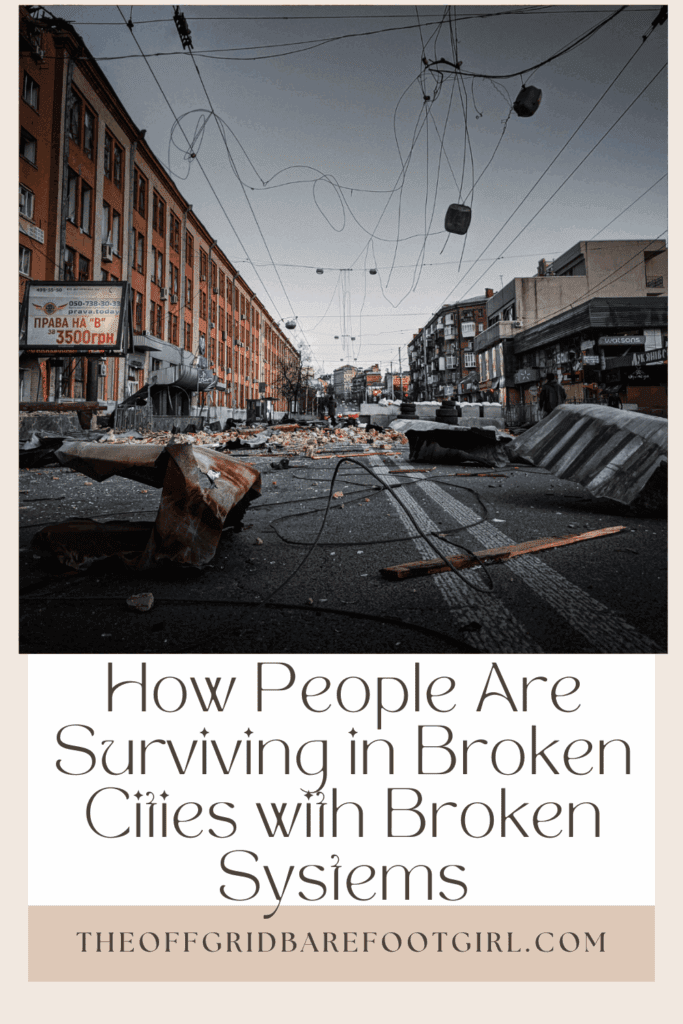
Feeding Families in a Warzone: How People Are Surviving
When infrastructure collapses, feeding your family becomes one of the hardest parts of survival. In many war-torn cities, food deliveries stop almost instantly. Supermarkets are looted or destroyed. Farmland is burned, and storage warehouses are bombed. But people still find ways to eat.
Families ration their food to a spoonful. Soups are stretched with water. Stale bread is softened with broth. In some areas, vegetables are dried in the sun on old windowsills or buried underground to preserve them.
Bartering comes back into daily life — a few potatoes traded for salt, a jar of pickles for a candle. In parts of Syria and Gaza, rooftop rabbits and chickens provide precious protein. People in Eastern Ukraine forage wild greens and mushrooms in dangerous woods just to make a meal.
When fuel is gone, people cook over fires, using anything that burns. Stoves are made from old paint cans. Meals are prepared outside in the cold, often with children huddled nearby for warmth. Food is not about satisfaction. It’s about survival.
Surviving the Sweltering Heat
In the peak of summer, the heat becomes its own kind of enemy. Without electricity, there are no fans, no air conditioning, no way to escape the oppressive temperatures that suffocate war-torn cities. People strip down to the bare minimum, seek shade wherever they can find it, and keep wet cloths on their heads or around their necks to cool down.
Families in Gaza and parts of Sudan sleep on rooftops or balconies at night, hoping to catch a breeze. In Ukraine, some dig into the earth to build makeshift cellars or underground shelters that offer a few degrees of relief. Water, already scarce, becomes even more precious as people ration every drop — not just to drink, but to stay alive in the blistering heat.
These families didn’t have perfect prepper kits or full pantries when their world fell apart. Yet they find ways to keep going, one bite at a time.
When Disease Spreads Faster Than Help Can Arrive
In broken cities with no clean water, no sanitation, and overflowing waste, disease spreads quickly — and dangerously. Without running water, people can’t wash their hands or clean wounds properly. Trash piles up in the streets. Human waste contaminates local water sources. In places like Gaza and Sudan, outbreaks of diarrhea, respiratory infections, hepatitis, and cholera become common. Medical care, if it exists at all, is often overwhelmed or inaccessible. In overcrowded shelters and basements, one sick person can infect dozens.
In these conditions, staying clean becomes a form of survival, and even minor infections can turn deadly without treatment. This is the harsh reality of survival when systems collapse — it’s not just about food and shelter, but avoiding the silent threat of illness that spreads in the shadows.
Children Bear Invisible Wounds Too
When systems collapse, children are pulled out of school and thrust into a world of uncertainty, fear, and survival. Classrooms are destroyed. Teachers flee or are killed. Daily routines vanish. Instead of learning math or reading stories, children learn how to stay quiet during shelling, how to sleep in crowded shelters, and how to live without toys, electricity, or safety.
This sudden loss of structure and stability takes a heavy toll. Many suffer from anxiety, nightmares, or trauma that lingers long after the war ends. Without access to education or mental health care, their emotional scars often go untreated. These young survivors grow up too fast, shaped by fear instead of imagination — another deep cost of living in broken cities with broken systems.
Off-Grid Mindset: Staying Sane in Chaos
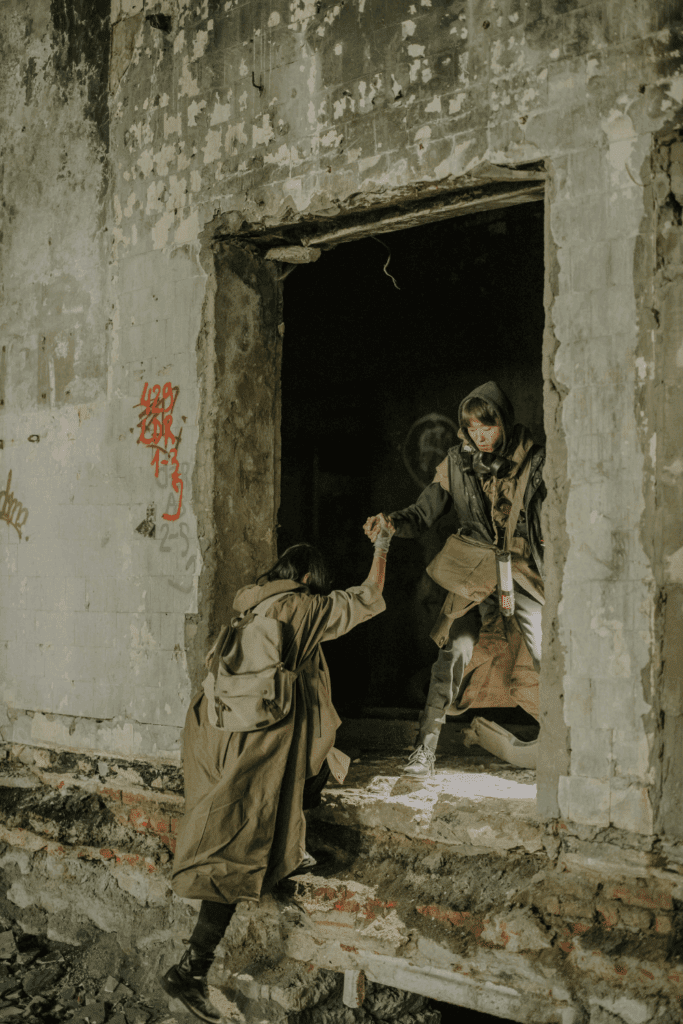
In a warzone, mental strength is just as important as food or fire. When everything falls apart, people survive not just by what they have, but by how they think.
Across broken cities, families create routines. Lighting a candle at the same time every night. Saying prayers together. Making up games with children. These little rituals offer a sense of normalcy in the middle of catastrophe.
People hold onto each other. Communities share what little they have. One family might have water. Another might have rice. A third offers shelter. Together, they survive. It’s not about who had the most supplies — it’s about who stayed calm, worked together, and refused to give up.
Even under constant threat, people laugh, sing, pray, and remember birthdays. They find purpose in protecting their children or helping a neighbor. That mindset — that quiet, fierce refusal to quit — is what survival really looks like.
What We Can Learn and Do Right Now: How People Are Surviving
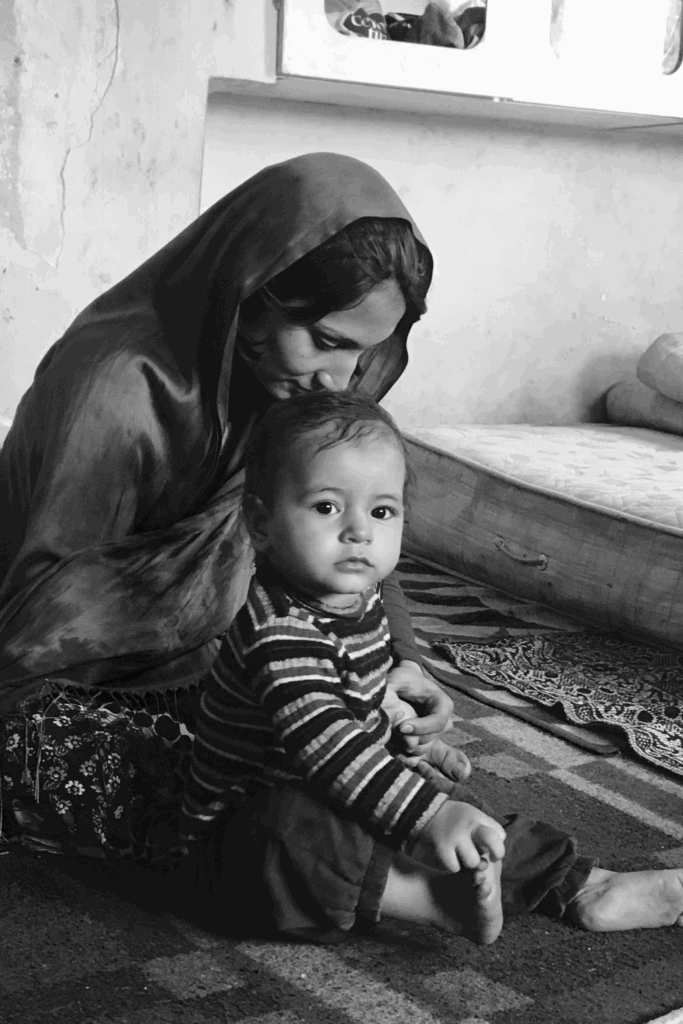
We often think survival means having the perfect bug-out bag (which I do talk about often) or a secret bunker in the woods. But the truth is, most people who survive war didn’t get to run. They didn’t get to plan. They stayed where they were — in broken cities with broken systems — and made it work.
Here’s what we can learn from them:
- Learn to improvise. Real survival isn’t about having all the tools. It’s about using what’s around you. A cracked pot, a windowpane, a rusted barrel — all can be turned into tools.
- Practice discomfort. Spend a weekend without electricity. Try hauling water. Cook outside. The more you practice now, the calmer you’ll be when it counts.
- Build relationships. No one gets through a crisis alone. The strongest survivors are the ones with someone to share it with.
- Prioritize knowledge over gear. Knowing how to filter water, start a fire, or preserve food without a fridge matters more than what’s in your closet.
- Stay calm. This may be the biggest lesson of all. Panic doesn’t help. Planning, breathing, and staying focused do.
This is how people are surviving in broken cities with broken systems — by staying adaptable, connected, and grounded.
Practice Survival Before You Need It!
One of the most powerful things you can do to prepare is to practice living without modern systems at least one week out of every month. Turn off the electricity. Don’t rely on running water. Cook every meal without your stove or microwave. It might feel inconvenient at first, but that’s the point — you’re training your body and mind to adapt.
The more familiar you are with discomfort, the calmer you’ll be if a real crisis ever comes. It gives you a chance to test your gear, sharpen your skills, and build confidence in your ability to survive. And if the day comes when systems collapse, you won’t panic — you’ll already know what to do.
Conclusion: What Real Survival Looks Like
We picture survival as clean packs, stocked shelves, and quiet retreats. But real survival? It’s mothers lighting fires in bombed kitchens and fathers melting snow for tea. Also, it’s teenagers learning how to grind wheat by hand because there’s no store left, while grandparents pass down recipes they once thought they’d never need again.
These people didn’t escape. They endured. Without bug-out bags. Without plans. Consequently, they did it in shattered buildings, surrounded by fear and ruin, they still found ways to live.
Their survival isn’t about gear. It’s about grit. It’s about doing what needs to be done, even when there’s nothing left to work with. That’s the lesson we need most.
Because how people survive in broken cities with broken systems is the rawest, truest version of what preparedness really is: not escaping hardship but enduring it together, with courage, day by day.
While some are surviving in urban chaos, those preparing for long-term self-sufficiency often find living on raw land offers more security and independence. Learn more in How to Live on Raw Land.
Learning how others adapt in failing systems highlights practical strategies you can apply—explore more in The Complete Guide to Emergency Preparedness: Everything You Need to Thrive in Any Situation.
Resources: Here are some helpful resources for further information.
- What is Life Really Like for Children Living in War Zones? – By World Help
- Surviving the Coming War – By Skyhorse Publishing
- Surviving the International War Zone – By eCampus
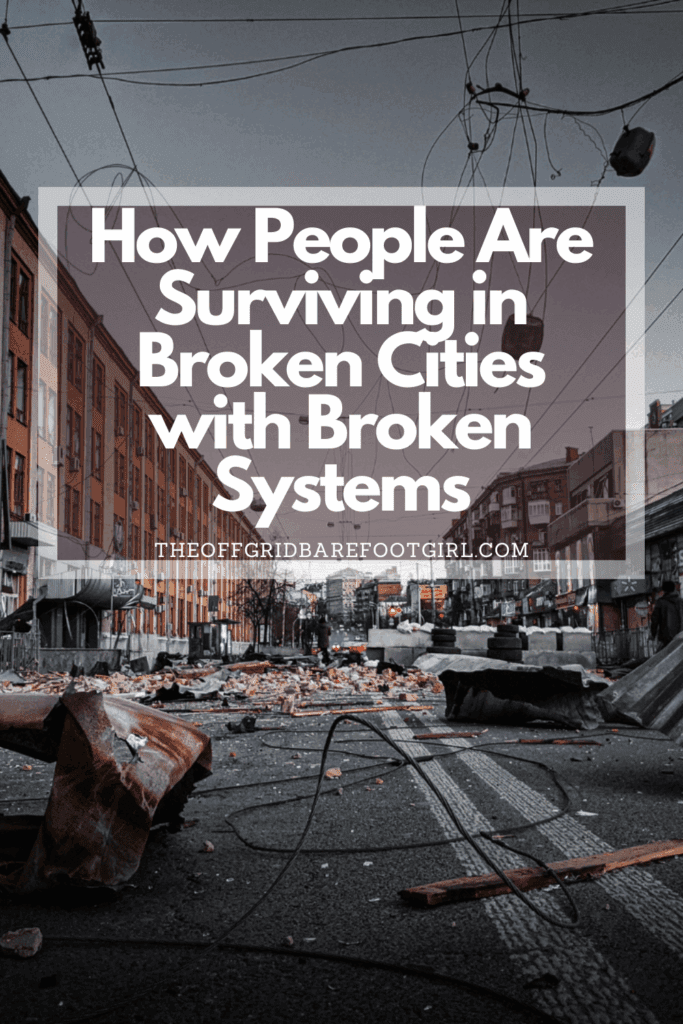
Frequently Asked Questions
1. Do people actually survive without power, water, or grocery stores?
Yes. In warzones today, families are surviving with no power, limited water, and empty markets. They adapt using fire for cooking, rainwater collection, and community bartering.
2. What’s the most important skill for surviving in a collapsed city?
Adaptability. The ability to stay calm, think creatively, and use whatever is available often matters more than gear or supplies.
3. Should I start practicing off-grid living now?
Absolutely. Practicing for even one week a month builds confidence, reveals weaknesses in your plan, and trains your mindset for real crisis situations.
4. Is having a bug-out bag still important?
Yes — but it’s not everything. Many people in war zones never had time to escape. Learning to survive where you are is just as critical as having a bag ready.
Summary
I hope I have inspired you to live sustainably with these tips and products.
If you were encouraged by this post, I invite you to check out my FREE Printables Page for fun free printables, planners, and charts.
ENTER MY FREE Printables Page HERE
Here are some more of my gardening inspiration posts to check out!
When the World Hurts, We Prepare with Purpose
How to Live On Raw Land: Everything You Need to Know!
How to Do Off-Grid Laundry with Eco-Friendly Laundry Detergent!
Hollywood on Fire! What Secrets Are In the Ashes?
FEMA Concentration Camps? Are Echos of the Past Returning?
How Likely Is a Russian EMP? One Pulse Could Black Us Out!
What Dark Secrets Lie in The Bird Flu Symptoms?
The Blackout Sun: Who Is Blacking Out Our Sunlight?
How to Bug-In During a Deep Freeze!
‘FOGVID-24?’ What’s in the Mysterious Fog That’s Making Everyone Sick?
From Snow to Sow: Plan Your Spring Garden Now!
11 Fun Ways to Brighten Your Spring Garden with Personality
Top 10 Spring Garden Crops to Harvest in 30 Days and Eat Now!
The Best Survival Crops for Caloric Survival
More Posts!
My Victory Garden: What I Learned from 5+ Years
Why Every Family Should Have a Victory Garden in Their Backyard Now!
The Best Perennials for a Long-Term Survival Garden
The Best Essential Oils for Plants That Repel Garden Bugs
How to Grow Green Garden Peas: Perfect Plump Peas!
Hugelkultur: Does This Epic Pioneering Method Actually Work?
9 Ways to Celebrate Earthing Day in Your Garden!
Gardening Indoors: Secrets of Growing Your Food Inside!
How to DIY a Milk Jug Drip Irrigation System!
Why Cedar Mulch Is The Perfect Natural Weed Barrier
Gardening Projects
Onions: How to Grow Onions for Storage
Peas: How to Grow Garden Peas for a Bumper Crop
Carrots: How to Grow Carrots for a Bountiful Harvest
Prep Your Garden for Spring Planting with These Expert Tips!
How to Grow a Prepper Garden to Survive and Thrive
The Best Garden Tools You Need for a Productive Season
Fastest Growing Vegetables for Your Survival Garden
How to Grow Marigolds As Pest Control In Your Vegetable Garden
Must-Have Tools for a Successful Balcony Vegetable Garden
How to Effectively Combat Powdery Mildew in Your Garden
The Best Tips for Organic Gardening
How to Release Ladybugs In Your Garden for Organic Pest Control
More Posts!!
The Best Garden Snail Control Strategies
The Best Spring Vegetables to Grow in Your Garden
Seed Starter Mix: How To Make Your Organic Seed Starter Mix At Home
How to Grow a Productive Canning Garden
How to Plant and Grow a Salsa Garden
Easiest Heirloom Vegetable Seeds to Grow Now
How to Use the Hand Twist Claw Tiller: Tackling Tough Soil
More Fun Gardening Posts to Check Out!
Planning Your Garden: How to Plan a Vegetable Garden: Expert Green Thumb Tips!
Winterizing the Garden: How to Winterize Your Vegetable Garden: Step-by-Step Checklist
Mulching the Garden: How to Make Leaf Litter Mulch
Grow a Pumpkin Patch: How to Grow a Pumpkin Patch in Your Backyard
How to Grow a Fall Garden: 9 Best Fall Crops
Clever Ways to Incorporate Indoor Composting into Your Home
How to Start Composting for the Garden: A Step-by-Step Guide
The Ultimate Guide to Composting in Your Suburban Backyard
Why I Built A Survival Garden in My Backyard
16 Best Medicinal Herbs to Grow in Your Garden Now
Blessings,
The Off Grid Barefoot Girl

